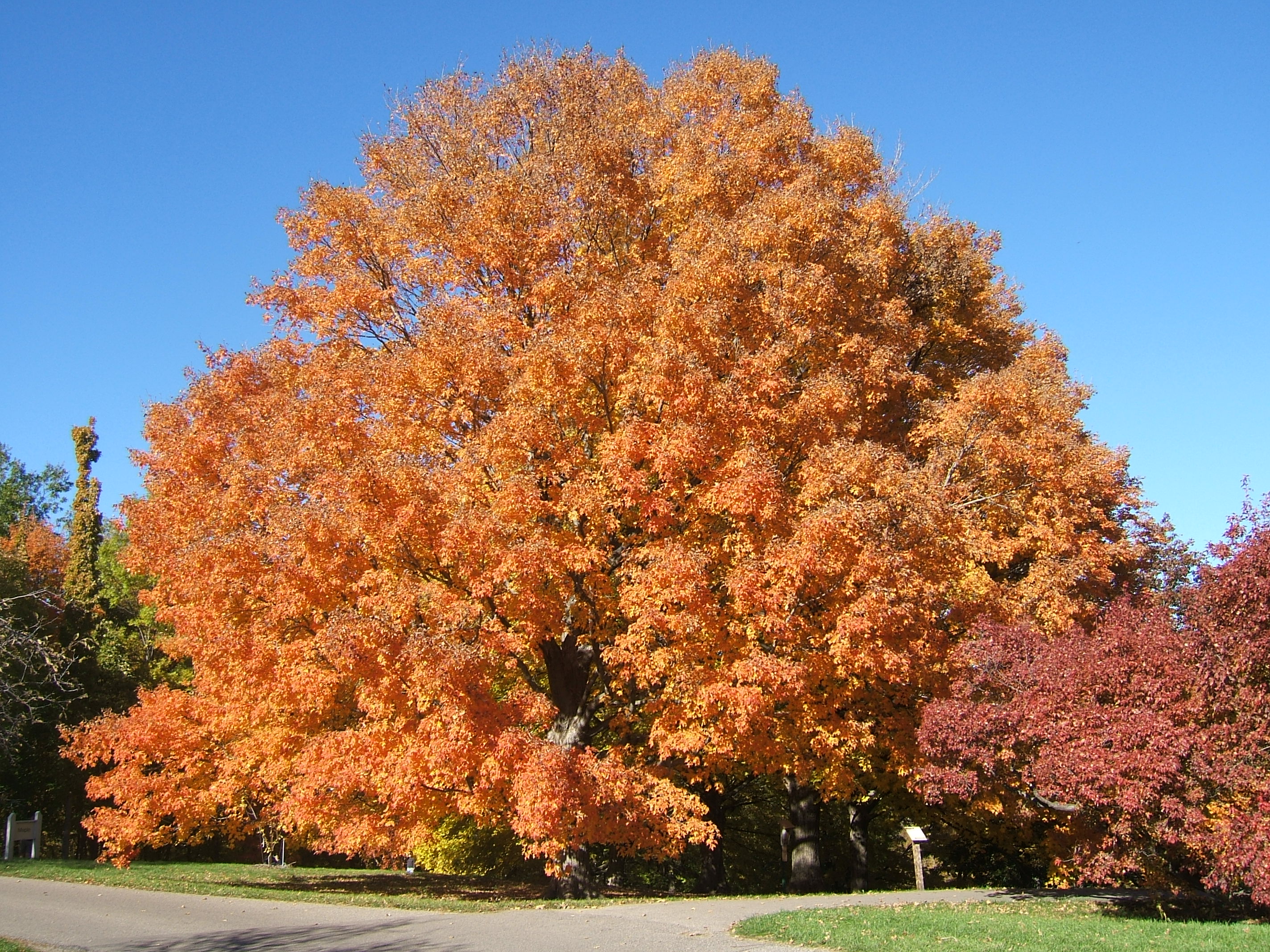Sugar maple
(Acer saccharum saccharum)

Description
Acer saccharum, also known as the sugar maple or hard maple, is a deciduous tree native to the eastern part of North America. It is known for its brilliant fall foliage and its use in the production of maple syrup. In this article, we will explore the various aspects of Acer saccharum, from its taxonomy and morphology to its ecological significance and cultural uses. Taxonomy: Acer saccharum belongs to the family Aceraceae and the genus Acer, which includes over 120 species of trees and shrubs. The species name saccharum is derived from the Latin word for sugar, referencing the tree's economic importance in the production of maple syrup. The sugar maple is closely related to other maples, such as the black maple (Acer nigrum) and the red maple (Acer rubrum), but can be distinguished by its distinctive bark and leaves. Morphology: The sugar maple is a large tree that can reach heights of up to 100 feet and a trunk diameter of 3-4 feet. The bark of the tree is gray and smooth when young, becoming furrowed and rough with age. The leaves are opposite and palmately lobed, with five lobes that are deeply incised. The leaf edges are serrated, and the upper surface of the leaf is shiny and green, while the underside is paler and has fine hairs. The leaves turn a brilliant shade of yellow, orange, or red in the fall. The sugar maple produces flowers in the early spring, before the leaves emerge. The flowers are small, yellow-green, and appear in clusters. The tree is dioecious, meaning that there are separate male and female trees. The male flowers produce pollen, which is wind-dispersed, while the female flowers develop into paired samaras, or "helicopter" seeds. Ecology: The sugar maple is a shade-tolerant tree that grows in a variety of soils and habitats. It is commonly found in deciduous forests in the eastern United States and Canada, from Nova Scotia to Georgia and as far west as Minnesota. The tree can grow in a range of elevations, from sea level to 4,500 feet. The sugar maple is an important component of the northern hardwood forest, where it can make up over 50% of the canopy cover. The sugar maple is also an important food source for wildlife. The seeds are eaten by squirrels, chipmunks, and other rodents, while the leaves and twigs are browsed by deer and moose. The tree also provides habitat for a variety of insects, including butterflies and moths. Cultural Uses: The sugar maple has long been valued by humans for its wood and its sap. The wood is hard, strong, and has a fine, even texture, making it a popular choice for furniture, flooring, and other wood products. The wood is also used for making musical instruments, such as violins, guitars, and drums. The sap of the sugar maple is used to produce maple syrup, a popular sweetener that is used in a variety of foods and beverages. The sap is collected by tapping the tree in the late winter or early spring, when the temperatures are below freezing at night and above freezing during the day. The sap is then boiled down to concentrate the sugars, resulting in the thick, amber-colored syrup. Conclusion: Acer saccharum, or the sugar maple, is a fascinating tree that is important both ecologically and culturally. Its distinctive morphology, brilliant fall foliage, and valuable wood and sap make it a beloved species throughout its range. As we continue to study and appreciate the sugar maple, we can gain a deeper understanding of the natural world and our place within it.
Taxonomic tree:







